Updated 21 Dec 2012 1800
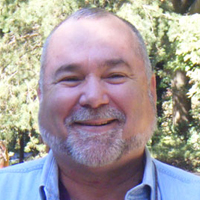
Click on Image for Personal Web Page
Short Persistent URL for This Post: http://tinyurl.com/UN-21-Intel
DOCUMENT: 2012 Reflections on UN Intelligence 2.3 21 Dec 2012
I had occasion to look at the Report of the Secretary General on the Work of the Organization, and thought this would be a good time to integrate some of what I have learned from working directly with the United Nations (UN), and what I believe could be helpful to the UN as it contemplates “next steps” into the 21st Century. My thoughts are deeply rooted in my perception of how badly governments have failed at governance, and how dysfunctional the Industrial Era approach to bureaucracy and information channeling has become. As the world prepares to migrate to hybrid forms of public governance, the UN's Industrial Era forms of organization and delivery are an impediment to its future viability. That is a challenge I would like to address, treating the UN as the logical hub for my emergent theory and practice of Public Governance (a mosaic) replacing Public Administration (a stovepipe) in the 21st Century.
Below the line is the document I have drafted in full text, followed by a number of links that are not in the document.
Practical Reflections on United Nations Intelligence (Decision-Support)
Robert David STEELE Vivas
Public intelligence (decision-support) is the only infinite resource available to the United Nations (UN) as a means of illuminating true costs, influencing publics, eradicating corruption, and harmonizing field effect. It is also the only means by which the UN will be able, with limited or declining direct resources, to mobilize and harmonize contributions (means) and actions (ways) by others toward the outcomes (ends). If this approach to information [Figure 1] is combined with an “All In” approach to Open Source Everything (OSE), and particularly a commitment to provide free OpenBTS / Open Spectrum for the five billion poor, it is immediately possible to begin creating a prosperous world a peace, a world that works for all – for We the People.
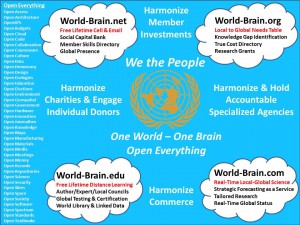
Figure 1: United Nations Harmonization Through Shared Information
The Secretary-General of the UN, Ban Ki-moon, the eighth Secretary General recently re-elected to a second term that will conclude on 31 December 2016—he will be eligible for re-election to a third term that would conclude on 31 December 2020—has recently embraced—perhaps coincidentally—two big ideas that I have been communicating to his Chef de Cabinet (Vjay Nambiar until February 2012), for some time now. The Secretary-General writes:
It is my conviction that the global problems we face today are simply too complex to be solved by Governments alone. They require collective and coordinated action by Government, by the private sector, by civil society, by academia, and by international organizations and multilateral development banks. Over the next year, I will develop a comprehensive proposal which seeks to harness the power of partnership.[i]
Elsewhere he says:
Priority areas for support should be targeted, better matching these areas with goals and targets, and specific means and tools to reach them should be identified.[ii]
Despite some excellent developments within the UN – I single out Umoja, the emerging but strictly internal Secretariat enterprise resource planning system (i.e. it does not include the autonomous Specialized Agencies or SA); the 2012 examination of Open Government Data as a basis for transparency, accountability, and collaboration; and the Secretary-General’s second term focus on learning, training, and research – the UN lacks a capability for intelligence (decision-support) with integrity (holistic analytics).
I believe the Secretary-General as quoted above is making the case for a United Nations Open-Source Decision-Support Information Network (UNODIN).
This article presents to the Secretary-General and other interested UN personnel my vision for UNODIN, a vision I formed while supporting General Cammaert and his championship of the Joint Military Analysis Centre (JMAC) and the related Joint Operations Centres (JOC). The purpose of UNODIN is to enable and empower partnerships from the individual to the tribal to the organizational to the national and regional, by implementing the practice of Multinational, Multiagency, Multidisciplinary, Multidomain Information-Sharing and Sense-Making (M4IS2)[iii] along with Open Source Everything (OSE),[iv] a concept I have recommended to Sir Richard Branson as “The Virgin Truth.”[v]
As the Obama Administration begins its second term, the prospect of Senator John Kerry (D-MA) being confirmed as Secretary of State, and of Senator Chuck Hagel (R-NE) being confirmed as Secretary of Defense, combine to make possible a realization of the Open Source Agency (OSA), an entity twice-approved by the Office of Management and Budget (OMB) as a Presidential initiative, contingent on one of these two Secretaries being the sponsor.[vi]
With an Initial Operating Capability (IOC) budget of $125 million a year, and a Final Operating Capability (FOC) of $3 billion a year, the OSA could fund everything this article proposes, and much more.
If the US Government fails to establish the OSA, I recommend the Secretary General approach three regional organizations with the suggestion that they each commit to $1 billion a year: the Community of Latin American and Caribbean States (CELAC), the new Regional Comprehensive Economic Partnership in Asia, and the African Union. With or without The Virgin Truth, I believe the Secretary General now has in hand an information-based concept for creating a prosperous world at peace, a world that works for all. With an initial focus on poverty, infectious disease, and environmental degradation,[vii] the top three high-level threats to humanity, UNODIN is the lever that can lift the world.
FIVE BIG IDEAS
01 There is plenty of money with which to achieve all of the UN goals both in the aggregate and at the SA level. What is lacking is a compelling public story that does two things: redirect national spending from war to peace;[viii] and harness donations from the 80% of the wealthy that do not give to charity because charities–including the Red Cross–have lost the public trust.
Half the battle for financial resources lies in winning the war on war—this is a war that can only be won with public intelligence (decision-support), which is not the same thing as public information—intelligence is active, information passive.
The other half of the battle can be won with a combination of using micro-requirements obtained in the field to incentivize and harness donations from the 80% of the one billion rich who do not contribute now, and in harmonizing all charity distributions using shared public intelligence (decision-support) that has the advantage of illuminating with great clarity how little the charities are actually delivering in relation to what they are receiving from the public. I briefed this concept in 2009 with the title, “Open Everything: Re-Inventing the United Nations.”[ix]
I am certain that the UN can create a global range of gifts table that is created from Short Message System (SMS) inputs to an International Crisis Mapping database, and from there triaged into aggregations of need to be met by organizations, and individual or household needs to be met by a series of individuals (one buys, one ships, one delivers). In Figure 2 I illustrate my concept, which also provides for accountability by the item in time and space. This means that the UN can provide a “dashboard” to the public that shows what is needed, who is delivering it, and what their performance percentage is – this will impact on who gets public contributions in real time and over time.
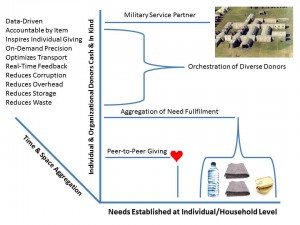
Figure 2: Bottom-Up Information-Driven Gift Needs & Accountability
02 The Only Sustainable Process is the Bottom-Up Process. In the 1970′s, when Peak Everything was first understood by the most gifted of integrative scholars, the Limits to Growth and World Government schools of thought emerged. They were both right in their foresight and wrong in their method. Limits to Growth (Meadows and Randers) sought to leverage governments into imposing top-down prescriptions on largely uneducated publics, while World Federalism (Falk et al) sought to lift the Industrial Era concept of top down administrative leadership to a world level. The UN still has this old mind-set, and that is the first thing that is going to have to change: it is going to have to realize that publics can be educated and that decentralized capabilities can be harmonized through shared information and intelligence, but they cannot be controlled. The avowed goals of the UN cannot be achieved — will never be funded nor operationally feasible — under the old mind-set. An educated informed connected public is the essential foundation for our shared future, for fulfilling our shared responsibility wisely.
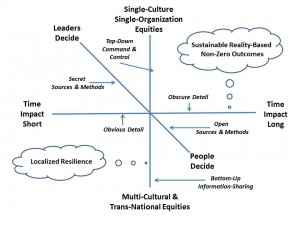
Figure 3: Bottom-Up Multi-Cultural Trans-National Approach to Peace
03 Corruption is the Primary Obstacle. Corruption is not just about theft, but about willful incompetence. It is now known that roughly 50% of all expenditures across the various domains are fraud, waste, or abuse. This is true from agriculture (47% waste from farm to family trash), defense (over 50%), energy (50% lost from centralized generator to edge of the grid), and health (50%).[x] The current UN approach, by relying on governments as intermediaries, furthers corruption and is both unresponsive to public needs, and incapable of being scaled or diversified. We must also confront the fact that many Non-Governmental Organizations (NGO) are themselves corrupt, delivering less than half of all received donations to the field – in one celebrated case, less than 2%.[xi] The public is now distrustful of most so-called aid endeavors. The next big step in UN delivery, after Delivery as One, will be Direct Delivery, combined with cradle to grave data-driven accountability—a real-world real-time dashboard for the public.
04 Trust Comes from Truth and Truth Comes from Transparency. Neither the UN nor the Member nation-states are transparent. Embracing Whole System analytics and True Cost Economics is the starting point. I illustrate my integrated approach in Figure 4, and include a vision for the integration of education, intelligence, and research, crossing all boundaries and enabling all forms of partnership.
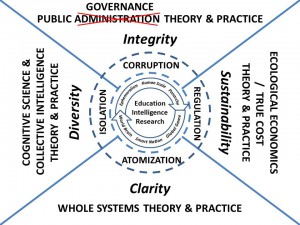
Figure 4: UN Intelligence & Integrity as a Partnership Enabler
05 The Only Scalable Process is the Open Process. The UN in its present form is an artifact of the colonial era. I believe we live in an Unconquerable World, a world where the powerless have power, where the people are a power governments cannot suppress.[xii] It is the public, not government, that is the constant going into the future, and it is the public — and particularly the five billion at the bottom of the pyramid, that must be connected to one another and to all information in all languages all the time, if we are to create infinite wealth, revolutionary wealth, the wealth of networks.[xiii] The UN is mired down — as all governments and militaries have been mired down — by an information and communications technology architecture that is rooted in proprietary systems that are not agile, do not integrate and thus do not scale, and are not just unaffordable, they are actually harmful to the health of the UN and all whom the UN seeks to assist and protect. Open Source Everything (OSE) is how the UN scales a public process capable of creating a prosperous world at peace, a world that works for all [Figure 5, also Figure 1].

Figure 5: Open Source Everything Creates a World That Works for All
With that as preamble, I now explore some possibilities for UN intelligence.
ON INTELLIGENCE
Two Definitions
Intelligence, in the professional sense that applies within this article, is both a process and a product. A synonym for intelligence is “decision-support.” The process of intelligence brings together requirements definition (what do we need to know, when, in what form, to what end); collection management (know who knows); source discovery and validation (legal ethical sources, largely human, in 183 languages); multi-source machine and human processing to achieve fusion and visualization; and finally the crafting of actionable intelligence (decision-support) that can be delivered to the individual or group that need to make a decision, in a form and in a time frame that makes it intelligence — actionable. Intelligence is generally a word, a paragraph, or a page – sometimes an annotated military chart (map), sometimes an image. Beyond that, it is information that has not been properly processed. Intelligence is not Enterprise Resource Management (ERM), but it can and should support ERM by establishing and satisfying decision-support needs in the management of enterprise resources. In the case of the Secretary General, whose ERM system is limited to the Secretariat, UN Intelligence can do much more in relation to both the Specialized Agencies and all parties external to the UN System, providing shared decision-support.
Intelligence has nothing to do with secret sources and methods. Intelligence is about outputs, not inputs. Over 95% of all decision-support is not secret, not expensive, and not available to or from Member governments, and certainly not to the United Nations. We are at the beginning of the third era of intelligence, the era of hybrid governance based on ethical evidence-based decisions among peers who share the raw information and the burden of sense-making.[xiv]
Integrity, in the design and holistic sense that applies within this article, is not just about honor–it is about wholeness of view, completeness of effort, and accuracy or reliability of all of the elements of the whole. The truth, the whole truth, and nothing but the truth is the non-negotiable starting position for getting it right, and this is crucially important with respect to the sustainability of the Earth as a home for humanity. Integrity also demands an open mind, and the ability to recognize that Industrial Era systems and processes are not agile, do not interoperate or scale globally, and are unaffordable. Design is where intelligence and integrity come together to create agile, affordable, scalable systems and processes that eradicate corruption, eliminate waste, and create a world that works for all. They must be inherently open.
Open Source Intelligence (OSINT) and UN Requirements
In keeping with the point that General Patrick Cammaert, NL RN and I have been making since we first spoke together in 2002,[xv] that intelligence is decision-support, it is also vital to stress that no less than 80% and often 100% of what the elements of the UN “needs to know” is not secret, not expensive, and more often than not, not available to them via the Member nation-states. Figure 6[xvi] provides my best estimate, as both a former secret intelligence professional and as the leading proponent for OSINT in modern times, of the relevance of OSINT to understanding and eradicating each of the ten high-level threats to humanity:
| Economic and Social Threats, including | 95% | |
| 01 | Poverty | 99% |
| 02 | Infectious Disease | 95% |
| 03 | Environmental Degradation (includes Climate Change) | 90% |
| 04 | Inter-State Conflict | 75% |
| Internal-Conflict, including | 90% | |
| 05 | Civil War | 80% |
| 06 | Genocide | 95% |
| 07 | Other Large-Scale Atrocities | 95% |
| 08 | Proliferation of nuclear, radiological, chemical, and biological weapons (many would add small arms as well) | 75% |
| 09 | Terrorism (often mis-labeled and actually internal conflict) | 80% |
| 10 | Transnational Organized Crime | 80% |
Figure 6: OSINT Relevant to UN Ten High-Level Threats to Humanity
Few who have not actually been intelligence professionals for decades understand that the proven process of intelligence is one-third requirements definition, one third collection management and process, and one-third holistic analytics well-grounded in historical and cultural understanding. Here below in Figure 7 I illustrate my personal concept for helping the UN’s leadership think about how best to define its requirements for intelligence in the 21st Century.

Figure 7: Overview of UN Intelligence Requirements Challenge
The range of elements — over 100 distinct organizations, missions, or expert interventions, but in reality, counting subordinate elements within each, at least 1,000 distinct “customers” for intelligence support, each with unique timeframes, over-lapping concerns, and near-term tactical objectives as well as strategic, operational, and technical objectives, make the UN intelligence challenge much more complex than that facing any individual government. It bears mention that the efficiencies that will be achieved in eliminating redundant information activities, and in identifying and filling gaps, will surprise and delight; and that no combination of governments is capable of providing the UN with the decision-support it must learn to acquire on its own.
Instituting a coherent comprehensive intelligence system within the UN System is the fastest, cheapest way to achieve coherence across all UN elements, and also the fastest cheapest way to dramatically reduce the cost of UN interventions at the same time that we radically improve UN efficiency and effectiveness in the near and the long term, across all boundaries.
Threat, Risk, & Opportunity
Intelligence is certainly about threat and risk, but it must also be about “everything always” if threat and risk are to be reduced in the long run. The workflow and priorities of the analyst must shift with the level of risk, but must always cover all of the core mission areas. In my view, the analysts that are now distributed across the UN Systems need to be managed as a whole, both to protect them from undue bias and influence at the office level, and to assure coherence and quality across the UN System’s intelligence enterprise.
Four Domains
The UN System, as a service of common concern to all Member nation-states and mindful of the many non-state stakeholders that are partners and beneficiaries, has four major domains where intelligence must be applied with integrity. They are Priorities, Policies, Acquisition, and Operations.
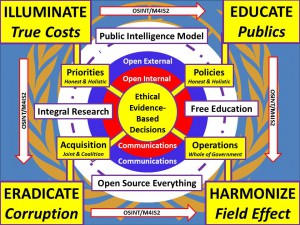
Figure 8: Overview of a UN Intelligence System with Global Effect
Developed coherently, this new system can have positive global effect not only within the UN System, helping to Deliver As One, but also across all possible partnerships, using M4IS2 to harmonize efforts by all for all.
To achieve coherence, one must have a strategic analytic model. We are fortunate to have in hand the considered findings of the High-Level Panel on Threats, Challenges, and Change, reporting out in A More Secure World: Our Shared Responsibility (United Nations, 2004). They have established the priorities as shown in the vertical left hand axis of Figure 9 below. Across the horizontal axis are the twelve core policy areas—more could be added but these are the ones identified by the Earth Intelligence Network, a 501c3.
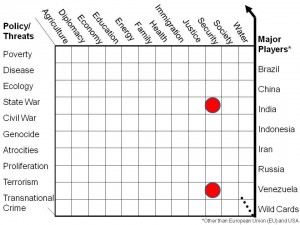
Figure 9: Strategic Analytic Model for UN System Intelligence
It is a huge mistake–a very expensive mistake–for the Member nation-states to spend the bulk of their disposable income on a military optimized for inter-state conflict, while chasing (some would say creating) terrorists—the two dots above emphasize all else that is neglected. The center of gravity for the UN in the future, in my view, lies with the use of Open Source Intelligence (OSINT) to present Member states and their publics with public intelligence—decision-support—so compelling that it begins the long over-due redirection of spending from war to peace and from fraud for the few to prosperity for all.
Combining the priorities and the policies creates the analytic model that can be applied at any level of analysis (strategic, operational, tactical, technical) by country or region. Of course we must respect the reality that the future is going to be defined by the demographic powers: Brazil, China, India, Indonesia, and Russia, with special attention as well to the full diversity of cultural nations — over 5,000 of them. All of this demands ethical evidence-based decision-making rooted in open communications, both internal and external—our objective is to create a world intelligence system that the major demographic powers respect, adopt, and support.
UN Lacks a Whole System Intelligence Capability
Although the UN is working hard to place analysts, including threat and risk analysts within the Department of Safety and Security (DSS), the UN continues to lack “intelligence” in the sense of an embedded process of requirements definition, collection management, source discovery and validation, multi-source fusion, deep multi-disciplinary analytics steeped in historical and cultural understanding, and it also lacks a common academy, a common set of standards, a means of auditing the competence and bias (two different things) of analysts across all boundaries, and a central point that can ingest, evaluate, integrate, and optimize all possible inputs both internal and external — the Situation Centre is not that place.
The UN also lacks integrity in the holistic sense. The Secretary-General has no practical authority over the Specialized Agencies (SA), and while the UN has been focusing on coherence and “deliver as one” as a concept, the lack of discipline and accountability across the major program appears to be persistent. I hope this article helps make it clear that the one initiative the Secretary-General can sponsor –- one totally in keeping with the Brahimi Report that has still not been fully implemented — is the creation of an intelligence service across all UN boundaries.
Case in point: as I examined the 56 recommendations of the UN High Level Panel on Global Sustainability Report Resilient People, Resilient Planet: A Future Worth Choosing (2012), what I saw was a very large number of “business as usual” stove-piped recommendations, and an absence of any sense of how M4IS2 — Multinational, Multiagency, Multidisciplinary, Multidomain Information-Sharing and Sense-Making –- can transform the UN System and how the UN System raises money and impacts on all others.
Sustainability is a challenge that must be addressed with public governance rooted in public intelligence; the UN System has been handicapped to date because it has attempted to address global challenges with the tools of public administration that are neither agile nor scalable.
I would add the observation that if the UN were to engage Sir Richard Branson and explore with him the concept I developed of The Virgin Truth rooted in free cell phones and free Internet and call center access for the five billion poor, the UN could reasonably anticipate accelerated achievement of all of its goals within a quarter century while monetizing the brainpower of the poor.
Nothing up to this point should be regarded as detracting from threat and risk assessment as the primary duty of UN analysts—at least in the DSS—and I turn to that topic now.
Threat and Risk Assessment Deficiencies
At this time the DSS is the principal element of the UN responsible for evaluating the threat and developing risk assessments. Of course other elements will do this as well in relation to their own programs, but the responsibility lies formally with the DSS. It is therefore helpful to itemize what I perceive to be continuing issues –- deficiencies of concern –- that can in my view be very rapidly resolved.
- Threat Risk Assessments are delayed & incomplete in part for lack of an analytic model and universal training program.
- Threat Risk Assessments do not reflect 360° UN System view nor regional/adjacent threat information
- Threat Risk Assessments do not have a well-founded directory of Indicators, Accelerators, and Triggers relevant to UN System security.
- UN Missions & individual UN agencies or forces have no integrated decision-support mechanism helpful to one and all.
- UN System has no global directory of sources with defined biases, sponsors, or agendas, nor access to all external open sources and methods such as are exploited by the best of the commercial intelligence enterprises.
- UN System is not perceived as having an effective but totally moral, legal, ethical information system helpful to both the UN System & Host Government.
- UN System does not have safe, efficient, or reliable (constant) means of sharing helpful information across all UN System boundaries (agencies, countries, missions, locations)
- UN System information is not efficiently acquired, exploited, or shared
- UN System has no means for identifying relevant sources, softwares, and services for multinational information sharing and internal analytics.
Hopeful that he was an anomaly, I do not include in the above my own personal experience with one specific Chief of Security who has since left the employ of the UN. He fabricated threats in order to lay claim to two-thirds of the budget and two-thirds of the manpower for an experimental UN unit; this is the same individual that failed to do a proper threat and risk assessment in Iraq, such that the unexpected truck bomb attack on the UN Headquarters killed 17 including Sergio Vieira de Mello, and wounded 100, on 20 August 2003. Anyone aware of the Beirut barracks truck bomb that killed 299 US Marines and French military in 1983 should have been able to protect the UN HQ in Iraq from a similar fate. It was this direct experience with an out of control Chief of Security that persuaded me that all analysts responsible for threat and risk assessment must be as independent of their local superiors as pilots are now under the new Department of Field Support (DFS) procedures.
Completely apart from the matter of proper training, equipping, and organizing of threat and risk assessment analysts, is the matter of culture and access. Today the UN is largely dependent on two sources of information: Member States (and when in-country, primarily the Host Member State); and UN elements–mostly the Departments, and to a much lesser extent, the SAs.
I have no doubt that advances have been made since I was last briefed, but I have the very strong feeling that the UN System is still not recognizing information-sharing, a multinational-process for sense-making (the process of creating actionable decision-support), and the outcome — shared intelligence — as the foundation for both safety & security, and for efficiency across all boundaries (very few, even within the UN, seem to understand that DSS is also responsible for the efficiency of all UN operations). To achieve advances against all UN objectives, it is imperative that all of the Brahimi Report recommendations be implemented, and that they be implemented with a very clear focus on the urgency of imbuing all UN elements with intelligence and integrity while creating a UN intelligence capability that can influence other actors and harmonize the investments of other actors toward shared responsibilities and objectives. Figure 10 and Figure 11 illustrate the larger possibilities for UNODIN in terms of accessing expertise and substantive data across the eight tribes or communities of information and intelligence.
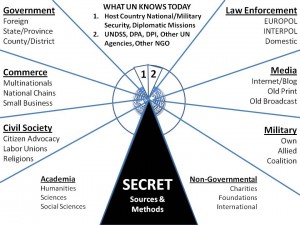
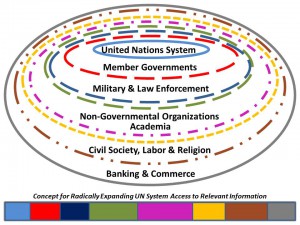
UN Intelligence and Integrity as a Priceless Asset
Sharing legal and ethical information, and sharing the burden of making sense of many disparate sources, is in my view the single practice that the UN System, perhaps led by DSS, can undertake in order to enhance security and efficiency across all boundaries, now and into the future. UN Intelligence with Integrity….this is the lever with which we can create a world that works for all.
Work of the UN — Nine Challenges
At the risk of alienating those with closed minds, I have to emphasize that the UN will never be successful as long as it is dependent on the Member nation-states for information (rarely if ever does it get intelligence), and as long as the Member nation-states are inherently corrupt. To take one small example, it should come as no surprise to the UN leadership that there has been a lack of progress on disarmament and non-proliferation when the Members of the UN Security Council are themselves the primary arms merchants and proliferators.
Below are listed the nine major areas addressed by Report of the Secretary General on the Work of the Organization to the 2012 General Assembly.
A. Promotion of Sustained Economic Growth and Sustainable Development
B. Maintenance of International Peace & Security
C. Development of Africa
D. Promotion of Human Rights
E. Effective Coordination of Human Assistance Efforts
F. Promotion of Justice and International Law
G. Disarmament & Non-Proliferation
H. Drug Control, Crime Prevention, and Combating Terrorism in All its Forms
I. Strengthening the Organization
I have been doing surveys of the UN website and UN reports for some time now, and two words keep jumping out of every exercise: stovepipes, and incoherence. The UN System is not structured to be effective. It is structured to benefit the management hierarchies unique to each stovepipe, and to channel funds from a sub-set of donors to a stovepipe end (arms control, food, health, water, whatever) with great inefficiency – perhaps as much as 50% being wasted on unnecessary overhead, time, and space.
Going over the many, many committees, working groups, advisory bodies, forums, etcetera, the primary product of the UN over the past decade or two appears to be bureaucracy –- a proliferation of conferences, meetings, resolutions, and reports that is perhaps twice if not three times the number needed to address the actual challenges. This proliferation of largely uncommunicative elements has directly undermined the UN’s ability to think, plan, budget, and act. A baseline review — a clean-sheet fresh start reconstruction of the UN on the basis of the ten high level threats — could perhaps be the Secretary-General’s greatest gift to humanity, enabled by his implementation of UNODIN as the shared intelligence architecture of the UN System.
Below is a list of the principal entities, apart from the hundreds of specific peacekeeping, rule or law, or humanitarian operations of the day:
General Assembly
1. First Committee (Disarmament and International Security Committee)
2. Second Committee (Economic and Financial Committee)
3. Third Committee (Social, Humanitarian and Cultural Committee)
4. Fourth Committee (Special Political and Decolonialization Committee)
5. Fifth Committee (Administrative and Budgetary Committee)
6. Sixth Committee (Legal Committee)
Security Council
1. 1540 Committee [Against NBC Proliferation]
2. Counter-Terrorism Committee
3. International Criminal Tribunal for the former Yugoslavia (ICTY)
4. International Criminal Tribunal for Rwanda (ICTR)
5. Military Staff Committee
6. Peacekeeping Operations and Missions
7. The Peacebuilding commission (PBC)
Economic and Security Council
Functional Commissions
1. Commission on Crime Prevention and Criminal Justice
2. Commission on Narcotic Drugs
3. Commission on Population and Development
4. Commission on Science and Technology for Development
5. Commission for Social Development
6. Commission on the Status of Women
7. Commission on Sustainable Development
8. Statistical Commission
9. United Nations Forum on Forests
Regional Commissions
1. Economic Commission for Africa (ECA)
2. Economic Commission for Europe (ECE)
3. Economic Commission for Latin America and the Caribbean (ECLAC)
4. Economic and Social Commission for Asia and the Pacific (ESCAP)
5. Economic and Social Commission for Western Asia (ESCWA)
Standing Committees
1. Committee on Negotiations with Intergovernmental Agencies
2. Committee on Non-Governmental Organizations
3. Committee for Programme and Coordination
Trusteeship Council
International Court of Justice
Secretariat
1. Executive Office of the Secretary-General (EOSG)
2. Office of Internal Oversight Services (OIOS)
3. Office of Legal Affairs (OLA)
4. Department of Political Affairs (DPA)
5. Office for Disarmament Affairs (ODA)
6. Department of Peacekeeping Operations (DPKO)
7. Department of Field Support (DFS)
8. Office for the Coordination of Humanitarian Affairs (OCHA)
9. Office for Disaster Risk Reduction (UNISDR)
10. Department of Economic and Social Affairs (DESA)
11. Department for General Assembly and Conference Management (DGACM)
12. Department of Public Information (DPI)
13. Department of Safety and Security (DSS)
14. Department of Management (DM)
Specialized Agencies & Related Organizations
Specialized Agencies
1. Food and Agriculture Organization of the United Nations (FAO)
2. International Civil Aviation Organization (ICAO)
3. International Fund for Agricultural Development (IFAD)
4. International Labour Organization (ILO)
5. International Maritime Organization (IMO)
6. International Monetary Fund (IMF)
7. International Telecommunication Union (ITU)
8. United Nations Educational, Scientific and Cultural Organization (UNESCO)
9. United Nations Industrial Development Organization (UNIDO)
10. Universal Postal Union (UPU)
11. World Bank Group
o International Bank for Reconstruction and Development (IBRD)
o International Centre for Settlement of Investment Disputes (ICSID)
o International Development Association (IDA)
o International Finance Corporation (IFC)
o Multilateral Investment Guarantee Agency (MIGA)
12. World Health Organization (WHO)
13. World Intellectual Property Organization (WIPO)
14. World Meteorological Organization (WMO)
15. World Tourism Organization (UNWTO)
Related Organizations
1. International Atomic Energy Agency (IAEA) (2)
2. Preparatory Commission for the Nuclear-Test-Ban Treaty Organization (CTBTO) (3)
3. Organisation for the Prohibition of Chemical Weapons (OPCW) (3)
4. World Trade Organization (WTO)
Secretariats of Conventions
1. Convention on the Rights of Persons with Disabilities
2. United Nations Convention to Combat Desertification (UNCCD)
3. United Nations Framework Convention on Climate Change (UNFCCC)
UN Trust Funds
• United Nations Democracy Fund (UNDEF) (4)
• United Nations Fund for International Partnerships (UNFIP) (5)
Other Offices
1. Counter-Terrorism Committee Executive Directorate (CTED)
2. Office of the United Nations High Commissioner for Human Rights (OHCHR)
3. Office of the United Nations High Commissioner for Refugees (UNHCR)
4. United Nations Conference on Trade and Development (UNCTAD)
5. United Nations Environment Programme (UNEP)
6. United Nations Human Settlements Programme (UN-Habitat)
7. United Nations Office on Drugs and Crime (UNODC)
8. United Nations Relief and Works Agency for Palestine Refugees in the Near East (UNRWA)
The above is not complete. What strikes me is that the UN System is inherently incoherent, built up incrementally over the past half-century, and consistent with normal practice in any bureaucracy, no element once created ever dissolves, and every element is constantly seeking to expand. For me as an intelligence professional, the UN System is a quagmire within which information is not shared, sense is not made, process triumphs over practice, and there is no possibility of the UN System, in its current configuration, ever being agile, affordable, or scalable.
By way of expanding on the need for a radical transformation of the UN System, I introduce a critical observation from Dr. Russell Ackoff:[xvii]
The righter we do the wrong thing, the wronger we become. When we make a mistake doing the wrong thing and correct it, we become wronger. When we make a mistake doing the right thing and correct it, we become righter. Therefore, it is better to do the right thing wrong than the wrong thing right. This is very significant because almost every problem confronting our society is a result of the fact that our public policy makers are doing the wrong things and are trying to do them righter.
Now here is a specific recent example of what the UN calls transformative that I call incremental —the UN is still trying to do the wrong things righter, not the right things. These are the members of the Inter-Agency Standing Committee (IASC) trying to make the humanitarian response system more effective:
- Inter-Action (Alliance of US-Based Non-Governmental Organizations (NGO)
- International Committee of the Red Cross (ICRC)
- International Council of Voluntary Agencies (ICVA)
- International Federation of Red Cross and Red Crescent Societies (IFRC)
- International Organization for Migration (IOM)
- United Nations Children’s Fund (UNICEF)
- United Nations Development Programme (UNDP)
- United Nations Food and Agriculture Organization (FAO)
- United Nations Habitat (UN Habitat)
- United Nations High Commissioner for Refugees (UNHCR)
- United Nations Office for the Coordination of Humanitarian Affairs (OCHA)
- United Nations Office of the High Commissioner for Human Rights (OHCHR)
- United Nations Population Fund (UNFPA)
- United Nations Representative of the Secretary General (RSG) on Human Rights of Internally Displaced Persons (IDP)
- United Nations Steering Committee for Humanitarian Response (SCHR)
- United Nations World Bank
- United Nations World Food Programme (WFP)
- United Nations World Health Organization (WHO)
Absent direct knowledge on my part, the above collection in very impressive as a mustering of the “usual suspects” but it does not provide a sense that the group has an information and intelligence system capable of identifying and exploiting all external sources of information relevant to their emergency work, nor that the information they do share with one another is processed in anything other than a repetitive manual manner — if processed at all.
At this time, and as represented by the above collection of entities, the UN “solution” is to name a single person in charge that can call on all others, but that person is not empowered with the intelligence analysts, the program management analysts, or the information and communications technology tools necessary to articulate requirements, process information inputs from all sources in all mediums, make sense of all of the incoming information, and then disseminate detailed directives that are data-driven and therefore more likely to produce results consistent with the assigned mission objectives.
In passing, it is necessary to recognize that many Member nation-states see the UN as an annoying distraction, a convenient front, or a “mark” for feeding corruption by the few in the guise of misplaced assistance to the many. Put bluntly, there is no amount of “administration” sufficient to integrate the stovepipes, instill coherence, or eradicate corruption. The UN is not alone. I personally was shocked and then outraged by the incompetence of the US Southern Command in its mis-handling of the Haiti earthquake and its aftermath. In my view, Haiti was the nail in the coffin of the regional US theater commands. They are worthless, and need to be replaced by regional M4IS2 Centres with a Whole of Government architecture.
It is also relevant, at least in my view as an outsider, that perhaps half of the UN employees are either nepotistic placements unqualified for what they do and inattentive to their duties; or spies who spend too much time undermining the UN and not enough time on their “cover” duties
Nine Pillars of Vulnerability Mitigation
I cannot complete this article without recognizing the UN’s own nine pillars of vulnerability mitigation that I have worked with since first learning about them in 2007. They are 01 Political Compromise; 02 Media Management; 03 Mandate & Mission; 04 Posture & Perception; 05 Information Management; 06 Operational Procedures; 07 Physical Security; 08 Technical Security; and 09 Human Intelligence (Passive Defensive not Offensive).
Information—Open, Legal, Ethical Information—is the Essential Foundation for Mitigating All Nine UN System Vulnerabilities While Also Contributing to UN System Efficiency in Every Organization, at Every Level, for Every Function and Mission. Intelligence is the catalyst for doing more with less, and more for more.
When Threat & Risk Assessment is the mission that must be the priority. In the larger scheme of things, though, the future of the UN — including future threats and future risks to the UN — will be largely determined by how well the UN adapts to the 21st Century and the Information Age. As the High-level Panel of Eminent Persons on the Post-2015 Development Agenda moves ahead, there is one stark reality: the one thing that can both reduce harm to the UN System from threats and risks today, while also structuring UN priorities, policies, acquisition, and operations to succeed in the future with no increase in funding, is intelligence…..decision-support.
United Nations Open-Source Decision-Support Information Network
There is one way to “re-frame” the UN for agility and scalability in the 21st Century without completely restructuring the entire UN System; through the creation of something that does not exist today, the United Nations Open-Source Decision-Support Information Network (UNODIN).
In the next few pages I provide four graphics that illuminate, first, where the various pieces of the UN System fit in relation to the Strategic Analytic Model (while revealing gaps); second, the Earth Intelligence Network “six bubble” concept for creating the World Brain and Global Game; third a high level concept for how UNODIN connects the UN to its Member nation-states and to external non-state actors; and fourth, an illustration of the various technical layers that could be developed among partners, perhaps starting with the Nordic countries.
With apologies for the somewhat cryptic nature of this next graphic (keyed to the long list of UN elements above, i.e. OO1 is Other Organizations #1), and the somewhat scattered lay-down (e.g. for economic organizations), here is what I see when I look at the UN System overlain on the Strategic Analytic Model.
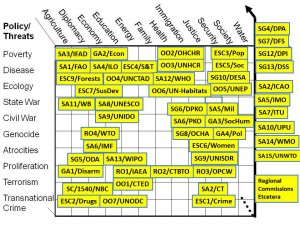
Figure 12: Threats, Policies, Organizations and Missing Information
a) At a strategic level, the UN is too focused on serving the capitalist system that serves the one billion rich, and not focused enough on enabling a new capitalist system and new partnerships that serve the five billion poor.
b) At the operational level, the UN is an unholy mess, with an incoherent mosaic of elements that do not communicate well with each other, do not share information with each other, have huge expensive redundancies in their support network, and generally cannot be relied upon to plan, program, budget, and execute as part of a larger team — there is no “team.”
c) At the tactical level, the UN is too focused on Effect and not focused enough on Cause. Especially absent is a sufficiency of focus on agriculture, education, family, and water. I heartily embrace the UN statement to the effect that access to the Internet is a human right, but as I look at the specific organizations such as the ITU, what I see in an enforcement regime for the convenience of the major Western telecommunications corporations, not an innovation regime focused on getting a free cell phone into the hands of every poor person, while providing calls centers and distributed networks able to educate them one cell call at a time.
d) At the technical level, the UN has no concept for creating a World Brain.
The entire UN appears to be a massive poorly informed bureaucracy that is reactive rather than proactive. Below is a graphic that shows how the UN, without changing its stovepipes, might radically alter when and what it can know, and who and how it can educate to the greater good of humanity. There is a solution to this problem that is low-cost and universal, and I show that solution in Figure 13.[xviii]
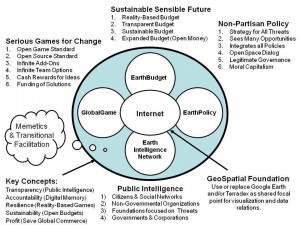
Figure 13: Earth Intelligence Network “Six Bubbles”
The UN lacks the one thing that is fundamental in the Information Age: an intelligence strategy. The UN has a Department of Public Information (DPI) with its 70+ channels, all out-going, all narrow-casting. It has its isolated information, outreach, and partnership elements, but it has no M4IS2 architecture, concept, doctrine, or even protocol, for ensuring that everything everyone in the UN System knows about agriculture at point X, to take one small example, is accessible. This is something the World Bank partially achieved under the gentle prodding of my friend Steve Denning,[xix] and I believe it must be the center of gravity for the Secretary General if he is to transform the UN System toward post-2015 sustainable success. In Figure 14 below I provide a high-level view of how UNODIN, the Six Bubbles, and a global Autonomous Internet can make the UN the nervous system, the heart, and the brain of a global development and sustainability network that achieves dignity and sufficiency for all.
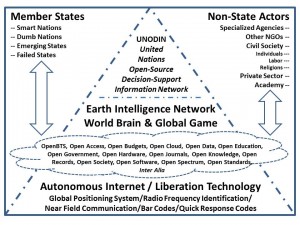
Figure 14: Global Nervous System for Development & Sustainability
I am reluctant to get too far ahead of the UN in this discussion (having been a quarter century ahead of the US Government I know all too well the pain of being three steps ahead of the common mind-set), but I may as well finish my chain of thought. Within the above global intelligence architecture that I am presenting, there is a substantive “core” that will make all the difference for humanity: the rapid expansion of the “Internet of things” where everything has a bar code or a Radio Frequency Identification (RFID) and its potential replacement, Near Field Communication (NFC). Such tagging will allow the rapid population of a massive global database capable of establishing and sharing with the public, at any hand-held device, the “true cost”[xx] of any item. Combined with Open Source Everything (OSE), this M4IS2 system will scale rapidly with the five layers –- six counting UNODIN – shown in Figure 15.
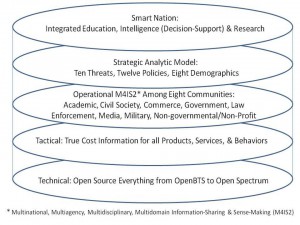
Figure 15: UNODIN as a Service of the Commons
This final graphic brings everything together, and can only be implemented — as the Secretary-General now understands — with the collaboration of all eight of the information-and intelligence communities that I have spoken of and written about since 1988 — using Open Source Everything (OSE).
My final vision calls for the eradication of all boundaries between and among all elements of education, intelligence (decision-support), and research. If we can offer every person on the planet a free cell phone with Internet access for life, we will create the World Brain and enable the Global Game.
Learning is additive and life-long; decision-support is delivered to every hand-held device at the point of sale or selection, and research takes place in real-time and engages all citizens (changes to the Earth that used to take 10,000 years now take three — the time for real-time global to local monitoring and evaluation is long past due).
In my view, 2012 is a year of awakening. I hope to continue being a catalyst for this awakening, and to be one of the Comprehensive Architects (Buckminster Fuller’s term) for the emergence of a humanity that is conscious of all information in all languages all the time, firmly grounded in the reality of our Whole Earth, capable of achieving a holy state of grace – daily bread for everyone, forgiveness for everyone – heaven on Earth. St.
– – – – – – – – – – – – – – – – – – – – – – – –
Robert David STEELE Vivas, 60 and of Latino heritage, is a US citizen deeply committed to the truth at any cost, as this lowers all other costs. After service as a Marine Corps infantry, intelligence, and administrative officer, he served six tours with the Central Intelligence Agency, three overseas as a clandestine case officer and three in Washington focused on counterintelligence, advanced information technology, and managing satellite collection programs. In 1988 he left CIA at the invitation of the US Marine Corps to become the senior civilian responsible for creating the Marine Corps Intelligence Center, today a global command. In 1993 he left the Marine Corps to begin a twenty year period of educational advocacy on behalf of Open Source Intelligence (OSINT), ultimately engaging over 7,500 mid-career officers from across 66+ countries. In 2006 he founded and funded the Earth Intelligence Network, a 501c3 non-profit educational endeavor. He is an honorary hacker and the #1 Amazon reviewer for non-fiction, reading in 98 categories.
[i] Report of the Secretary-General on the Work of the Organization, General Assembly Official Records, Sixty-seventh Session, Supplement No. 1 (New York: United Nations, 2012), in Section I. Strengthening the Organization.
[ii] Ibid., in Section C. Development of Africa.
[iii] Col Jan-Inge Svensson, SE (Ret) is the one individual I consider to be the father of peacekeeping intelligence; he taught me the Nordic practice of blending multinational intelligence and operations centres. Dr. Walter Dorn, most recently author of Keeping Watch: Monitoring Technology and Innovation in UN Peace Operations (Tokyo, JP: UN University Press, 2011), has been the archivist of UN peacekeeping intelligence from the 1960’s in the Congo to date.
[iv] A partial list of many opens is provided on the left side of Figure 1, and is also visible at http://tinyurl.com/OSE-LIST. My latest book, THE OPEN SOURCE EVERYTHING MANFIESTO: Transparency, Truth & Trust (Berkeley, CA: North Atlantic Books, 2012), presents the ideas I have been developing on the technical side since 1986.
[v] My one-page proposal to Sir Richard can be viewed online by searching for “2012 Steele for Branson: The Virgin Truth 2.6”
[vi] Complete details on the 20-year fight to get the Open Source Agency (OSA) established is online at the following address: http://tinyurl.com/OSA2011.
[vii] The ten high-level threats to humanity, in priority order, are 01 Poverty, 02 Infectious Disease, 03 Environmental Degradation, 04 Inter-State Conflict, 05 Civil War, 06 Genocide, 07 Other Atrocities, 08 Proliferation, 09 Terrorism, and 10 Transnational crime, as reported out in High-Level Panel on Threats, Challenges, and Change, A More Secure World: Our Shared Responsibility (United Nations, 2004).
[viii] Professor Medard Gabel, co-creator of the analog World Game with Buckminster Fuller, and architect of both the Earth Dashboard for the UN and the EarthGame for Earth Intelligence Network, has researched and documented the reality] that we can achieve all of the UN goals for one third of what we spend on the instruments and waging of war. Below is from a graphic he provided in personal communication.
| US20B End Starvation & Malnutrition | US17B Safety for All |
| US12B Clean Water for All | US30B Retire Debt/Credit for All |
| US23B Health Care for All | US45B Energy for All (Clean, Safe) |
| US21B Shelter for All | US11B Population Stabilization for All |
| US10B Education for All | US12B Democracy & Diversity for All |
| TOTAL FOR PEACE: US201B/Year | TOTAL NOW FOR WAR: US1T/Year |
[ix] Search for 2009 Briefing: Open Everything at UNICEF in NYC, 18 April 2009.
[x] Cf. The price of excess: Identifying waste in healthcare spending (Price Waterhouse Coopers, April 2008).
[xi] “Bono’s ONE foundation under fire for giving little over 1% of funds to charity,” MailOnline, 23 September 2010.
[xii] I refer here to Jonathan Schell, The Unconquerable World: Power, Nonviolence, and the Will of the People (New York, NY: Holt Paperbacks, 2004); Vaclav Havel, The Power of the Powerless: Citizens Against the State in Central-Eastern Europe (Armonk, NY: M. E. Sharpe, 1985); and Howard Zinn, A Power Governments Cannot Suppress (San Francisco, CA: City Lights Publishers, 2006).
[xiii] I refer here to Barry Carter, Infinite Wealth: A New World of Collaboration and Abundance in the Knowledge Era (Waltham, MA: Butterworth-Heinemann, 1999); Alvin Toffler, Revolutionary Wealth: How It Will Be Created and How It Will Change Our Lives (Crown Business, 2007) and Yochai Benkler, The Wealth of Networks: How Social Production Transforms Markets and Freedom (New Haven, CT: Yale University Press, 2007).
[xiv] My most recent and complete views on the third era of intelligence, of which I am the primary proponent, are at “The Craft of Intelligence,” a commissioned chapter in Robert Dover, Michael Goodman, and Claudia Hillebrand (eds.). Routledge Companion to Intelligence Studies (Oxford, UK: Routledge, 31 July 2013)
[xv] We met at the first international conference on Peacekeeping Intelligence co-sponsored by the Netherlands Defence College (NDC) and the Netherlands Intelligence Studies Association (NISA). I subsequently funded publication of the first book in English on this vital topic, Ben de Jong, Wies Platje, and Robert David Steele, Peacekeeping Intelligence: Emerging Concepts for the Future (Oakton, VA: OSS International Press, 1993). The book was on display in the lobby of 1 UN Plaza during General Cammaert’s tenure as Military Advisor to the Secretary-General.
[xvi] Previously published in “Open Source Intelligence,” in Loch Johnson, Strategic Intelligence (Santa Barbara, CA: Praeger, 2006) Volume II, Chapter 6, pp. 95-122.
[xvii] Russell L. Ackoff, “Transforming the Systems Movement” (White Paper, 26 May 2004), p. 2.
[xviii] Much more information about this can be found at the Earth Intelligence Network, including the ten-page white paper on how to create this for less than $15 million dollars a year.
[xix] Cf. Stephen Denning, The Springboard: How Storytelling Ignites Action in Knowledge-Era Organizations (Waltham, MA: Butterworth-Heinemann, 2000)
[xx] “True Cost” or Ecological Economics, was pioneered by Dr. Herman Daly. It assures consideration of the actual water, fuel, and child labor integrated into the manufacture and delivery of any good or service, and also factors in import-export tax fraud, tax avoidance, and toxins released into the environment at every point on the production, use, and disposal cycle.
Selected References and Summary Reviews [Not in Document]
21st Century Intelligence Core References 2007-2013
2012 PREPRINT: The Craft of Intelligence
2012 Robert Steele Answers PhD Student Questions
2012 Integrity, Reflexivity, & Open Everything
2011 Open Source Agency: Executive Access Point
2011 Cyber-Command or IO 21 + IO Roots
2011 Thinking About Revolution in the USA and Elsewhere (Full Text Online for Google Translate)
2011 Peace from Above: Future of Intelligence & Air Power
2010 M4IS2 Presentacion por Sur America (ANEPE Chile) — 2010 M4IS2 Briefing for South America
2009 Intelligence for the President–AND Everyone Else [Full Text Online for Google Translate]
2008 DIA NDIC Multinational Intelligence Fellows
2008 Open Source Intelligence (Strategic)
2008 Open Source Intelligence (Operational)
2008 Rebalancing the Instruments of National Power (Full Text Online for Google Translate)
2008: World Brain as EarthGame (Full Text Online for Google Translate)
2008: Creating a Smart Nation (Full Text Online for Google Translate)
2008 The Substance of Governance
2007 United Nations “Class Before One” Infomation-Sharing and Analytics Orientation
2006 IJIC 19/3 Peacekeeping Intelligence & Information Peacekeeping
2004: Information Peacekeeping A Nobel Objective
2004 IJIC 17/2 Information Peacekeeping & The Future of Intelligence
2003: Peacekeeping Intelligence Leadership Digest 1.0 (Full Text Online for Google Translate)
2002 Information Peacekeeping (NISA Keynote NL)
2002: New Rules for the New Craft of Intelligence (Full Text Online for Google Translate)
1998 Information Peacekeeping: The Purest Form of War
1990 Expeditionary Environment Analytic Model
1989 Expeditionary Environment Briefing
Berto Jongman: Does Terrorism Work? What Do They Want? + Meta-RECAP
Books: Intelligence for Peace (PKI Book Two) Finalizing
Chuck Spinney: From Algeria to Libya –Lessons Not Learned + USG CIA Web of Deceit in Arabia RECAP
COLLECTIVE INTELLIGENCE: Creating a Prosperous World at Peace (2008)
David Swanson: Lies and Consequences Across 15 Wars
Future of Multinational Intelligence & Operations
G.I. Wilson: Killer Drones, Moral Disengagement, + War Crimes RECAP
Graphic: Core Force for Multinational and Whole of Government Operations
Graphic: Eight “Tribes” or Communities of Information & Intelligence
Graphic: Global Risks Government Failure Central
Graphic: Meeting 21st Century Transnational Challenges – Building a Global Intelligence Paradigm
Graphic: OSINT Relevance to High-Level Threats to Humanity
Graphic: Smart Nation World Brain Pyramid
Graphic: Strategic Intelligence Secretariat United Nations
Graphic: Strategic Narrative Process Model
Graphic: UN-Centric Global Information-Sharing
Graphic: UN Cluster Approach to Humanitarian & Emergency Relief Coordination
Graphic: UN Information Strategy for 21st Century
Graphic: UN Intelligence Requirements Definition
Graphic: UN Level 3 Emergency Timeline
Graphic: UN Open-Source Decision-Support Information Network (UNODIN) Pyramid
Howard Rheingold: Infotention Skills + Citizen Intel RECAP
INFORMATION OPERATIONS: All Information, All Languages, All the Time (2006)
INTELLIGENCE FOR EARTH: Clarity, Diversity, Integrity, & Sustainability (2010)
Journal: Reflections on Integrity UPDATED + Integrity RECAP
Journal: Reflections on Peace & Prosperity
Journal: The Death of Responsible Government
Journal: United Nations and Information-Sharing
Journal: UN on Food Security, It’s All Connected
Mini-Me: US Dollar Out, Yuan, System D, and Open Money In + Meta-RECAP
My Talk With Tom Atlee: Primer on Citizen Intelligence
Peacekeeping Intelligence: Emerging Concepts for the Future (2003)
Reference (2): United Nations Intelligence in Haiti
Reference: Developing UN Peace Intelligence Capabilities
Reference: Melanie Ramjoue on UN Intelligence
Reference: World Brain 101, 102, 103
Reference: World Brain Institute & Global Game
Reflections on Revolution, Information & Civil Affairs
Review: All Rise–Somebodies, Nobodies, and the Politics of Dignity
Review: Blue Frontier–Dispatches from America’s Ocean Wilderness
Review: Chasing the Flame–Sergio Vieira de Mello and the Fight to Save the World
Review: Collapse–How Societies Choose to Fail or Succeed
Review: Common Wealth–Economics for a Crowded Planet
Review: Corruption and Anti-Corruption–An Applied Philosophical Approach
Review: Critical Choices – The United Nations, Networks, and the Future of Global Goverance
Review: Designing A World That Works For All
Review: Endless War–Middle-Eastern Islam vs. Western Civilization
Review: Evolutionary Activism by Tom Atlee
Review: Fixing Failed States–A Framework for Rebuilding a Fractured World
Review: Flawed Diplomacy–The United Nations & the War on Terrorism
Review: Getting a Grip–Clarity, Creativity, and Courage in a World Gone Mad
Review: Global Public Policy – Governing Without Government?
Review: Grand Strategies — Literature, Statecraft, and World Order
Review: Green Intelligence: Creating Environments that Protect Human Health
Review: Guiding Principles for Stabilization and Reconstruction (Paperback)
Review: High Noon–Twenty Global Problems, Twenty Years to Solve Them
Review: How to Run the World–Charting a Course to the Next Renaissance
Review: Intelligent Governance for the 21st Century: A Middle Way between West and East
Review: International Intelligence Cooperation and Accountability
Review: International Peace Observations
Review: Keeping Watch – Monitoring Technology and Innovation in UN Peace Operations
Review: Lines of Fire – A Renegade Writes on Strategy, Intelligence, and Security
Review: Looking For Trouble–Adventures in a Broken World
Review: Managing Nano-Bio-Info-Cogno Innovations: Converging Technologies in Society
Review: No More Secrets – Open Source Information and the Reshaping of U.S. Intelligence
Review: Of Centuars and Doves–Guatemala’s Peace Process
Review: Peace–A History of Movements and Ideas
Review: Peacekeeping and Public Information: Caught in the Crossfire
Review: Plan B 3.0–Mobilizing to Save Civilization, Third Edition
Review: Promoting Peace with Information–Transparency as a Tool of Security Regimes
Review: Public Information Campaigns in Peacekeeping : The UN Experience in Haiti
Review: Resilience Thinking–Sustaining Ecosystems and People in a Changing World
Review: Shake Hands With The Devil–The Failure Of Humanity In Rwanda
Review: The Best Intentions–Kofi Annan and the UN in the Era of American World Power
Review: The Folly of War–American Foreign Policy, 1898-2005
Review: The Invention of the Jewish People
Review: The New Rulers of the World
Review: The Philanthropy of George Soros – Building Open Societies
Review: The Politics of Happiness–What Government Can Learn from the New Research on Well-Being
Review: The Trouble with Africa–Why Foreign Aid Isn’t Working
Review: Waging Peace–The Art of War for the Antiwar Movement
Review: War Games: The Story of Aid and War in Modern Times
Review: Who Governs the Globe?
Review: World 3.0 – Global Prosperity and How to Achieve It
Richard Falk: When Is An NGO Not an NGO?
Robert Steele: Future-Proofing the City
Robert Steele: Global Trends 2030 – Gaps + RECAP
Robert Steele: John Kerry, Global Engagement, and National Integrity PLUS Michele Flournoy
Robert Steele: Reflections on United Nations Intelligence & Counterintelligence
Search: global brain human brain + RECAP
Search: gross national happiness (sic)
Search: jack davis analytical support for peace
Search: Multinational Engagement (Intelligence)
Search: solutions for prosperous world UPDATED to include readings & contact info
Search: Strategic Analytic Model
Search: The Future of OSINT [is M4IS2-Multinational]
Search: UN intelligence peace intelligence
Search: United Nations Intelligence Training
Search: UN intelligence peace intelligence
Susan Lindauer: IRAQ – The Legacy of Deception and Its Costs
THE NEW CRAFT OF INTELLIGENCE: Personal, Public, & Political (2002)
Tom Atlee: Letter to a Peace Activist — CHANGE the Game!
Tom Atlee: New Developments in Co-Intelligence Work
United Nations Millennium Declaration
UN-NGO Archives on Public Intelligence (1992-2006)
UN System Task Force Report on the Post-2015 Development Agenda
Vint Cerf: Keep the Internet Open – Full Transparency on Internet Governance Discussions Needed
Who’s Who in Collective Intelligence: Jerome Glenn
Who’s Who in Collective Intelligence: Robert David STEELE Vivas
Who’s Who in Peace Intelligence: Harrison Owen
Who’s Who in Peace Intelligence: Hugh Smith
Who’s Who in Peace Intelligence: Martin Rudner
Worth a Look: Book Review Lists (Positive)
Worth a Look: Book Review Lists (Negative)
Worth a Look: Book Reviews on Intelligence (Most)
Worth a Look: Eight Books on Securing the Peace and the New Meme “Responsibility to Protect”
Yoda: Real-Time Crowd-Sourcing + Twitter Meta-RECAP



